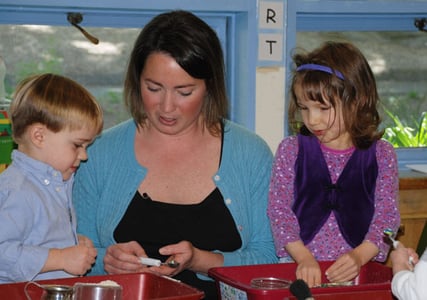
Quick quiz! Mentally select your answer.
How many back-and-forths are needed for an effective feedback loop?
- One
- Three
- Five
- Seven
This question reminds me of the age-old question, “How many licks does it take to get to the Tootsie Roll center of a Tootsie Pop?” But don’t worry—I promise I won’t leave you hanging with “The world may never know” like the Tootsie Pop commercial did.
The answer is actually none of the above! Does that surprise you?
Just like there is no magic number of licks it takes to get to the center of a Tootsie Pop (results from experiments range from 144 to 850 licks!), there is no magic number of back-and-forths needed to make an effective feedback loop. It takes however many it takes to accomplish the goal of Quality of Feedback—to expand learning and understanding. The feedback loop is effective when the child “gets it,” when they reach the next level, when they walk away from the interaction knowing more than they did before.
As teachers, we want to make sure we’re not crunching into the Tootsie Pop too early, or ending the feedback loop, after a prescribed number of licks, or back-and-forths. Let the feedback loop play out. Keep persisting with it until you reach the center, or expand the child’s learning and understanding. But note that you don’t want to just ask questions for the sake of asking questions. Giving truly effective feedback means paying attention and listening so that you can ask questions and make comments that relate to and build on what the child is saying or doing.
So, what might an effective feedback loop look like? Here’s an example loosely based off of a real classroom observation I did.
T: Which of the five senses can we use to describe the apples we are eating?
C: Taste.
T: Taste—that’s right. We can eat the apple and see how is tastes. What else?
C: Mmm…
T: What is the sense we use our eyes for?
C: Looking.
T: Yep, that sense is called sight. Can you think of any other senses?
C: Hearing.
T: Good job! Hearing is another sense. Can we hear apples?
C: No, they don’t make noises.
T: True. They usually don’t make noises on their own. But do they make a noise when we bite into them?
C: Yeah! They go crunch.
Questions to ponder: How is learning and understanding expanded in this feedback loop? Are there ways to expand learning and understanding even further?
Check out the video library for more examples of feedback loops in practice!

